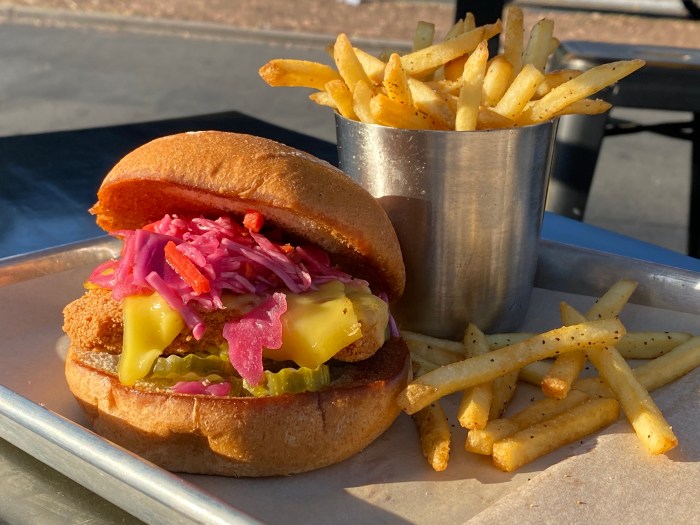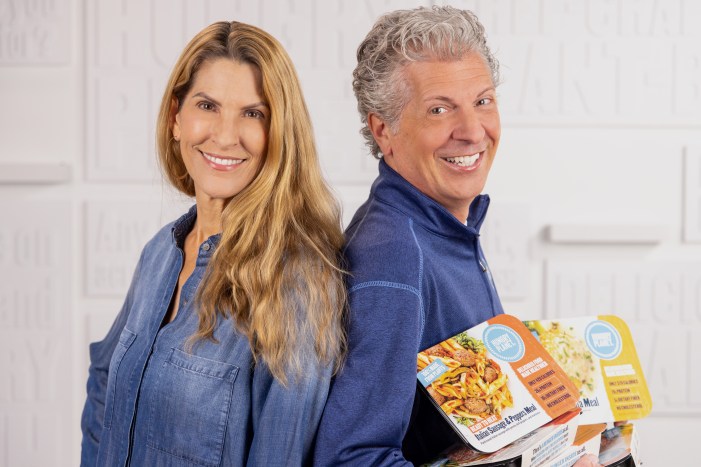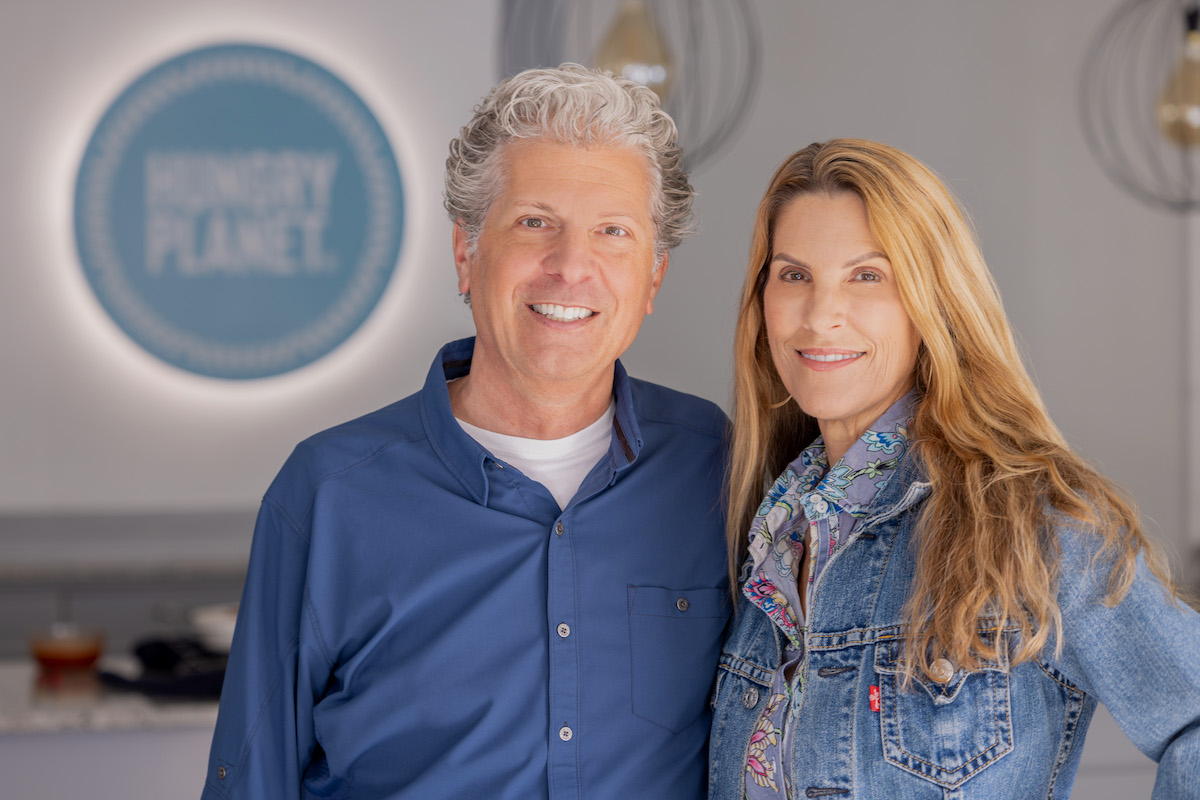Early mass-market attempts at plant-based meats — those mealy, easy-to-burn Gardenburgers and cartoonish, oddly bendy Morningstar bacon strips quickly come to mind — made it easy for meat-eaters to continue making fun of their vegetarian friends.

“Those were made for vegetarians,” explains Jody Boyman, cofounder of the fast-growing plant-based meat empire Hungry Planet. “We didn’t care about vegans and vegetarians,” said the Santa Barbara resident of that persistently small subsect of eaters. “We decided we needed to make meat directly from plants that would satisfy even the most carnivorous meat-eating guy.”
With 18 items for sale in restaurants and 17 products on retail shelves across the country, Hungry Planet is targeting the much larger category of flexitarians, those folks who aim to eat healthy and conscientiously but still love a good chunk of meat on occasion. With textured soy protein as a common base, the company’s line includes nine different meats — beef, chicken, pork, lamb, turkey, crab, chorizo, Italian sausage, and breakfast sausage — that come in an array of forms, from ground to cutlets to entire meals, like chicken piccata, Salisbury steak, and penne pasta with sausage.
“We have the most complete range of plant-based meat on the market,” said Boyman, who was recently asked to develop plant-based camel meat while visiting the Middle East. “We’re constantly trying to demystify plant-based meats for people who clearly want to be in the category but are just a little confused by it. For us, it was much more than a beef and burger play, which is what our competition was doing.”
Better Than Meat?

My diet, I’ve learned, is full flexitarian: dominated by veggies, fruits, grains, and soy at most meals, but typically involving a daily dalliance with some sort of fish or meat. I’ve always been open to trying out alternative meats and am a fan of Impossible Meat, using it for burgers, sauces, and so forth with regularity. But after trying just four Hungry Planet meats — I put grilled chicken strips on a Caesar salad; slapped crisp and fried chicken patties on sweet rolls with spicy barbecue sauce; tossed Italian sausage crumble into eggs; and dipped pork gyoza in a soy-ginger sauce — I could quickly see why the company is well-positioned to tackle the world. We’ve already bought more of the fried chicken.
“When it’s easy and affordable, you will choose something plant-based if it tastes great, reminds you of meat, is pretty healthy, and feels good in your stomach,” said Boyman, describing me exactly.
Her own plant-based diet started 45 years ago as a grammar school student in St. Louis, Missouri. “I didn’t know anyone else who was. I didn’t know there was a term for it,” she recalled. “I was one of those kids that rescued dogs dumped on county roads or the bird that fell out of its nest or earthworms on the pavement after a rainstorm. I was that kid who was very, very connected to the natural world.”
It was a “wildly unpopular” stance in the 1970s. “I just decided that animals didn’t need to be part of my diet,” she said. “Of course, everyone thought I was gonna die.”
Her sister, now an OB-GYN in Vermont, also went plant-based at a young age. Over the years, they pestered their brother, the other Hungry Planet cofounder, Todd Boyman, with data and science about the environmental and health benefits until he, too, saw the wisdom.
“We’re slaughtering 80 billion animals per year and we’re struggling to feed seven billion humans — there’s something drastically wrong with that equation,” said Boyman. “We need to be feeding plants to people and not running them through animals first.”
Sign up to get Matt Kettmann’s Full Belly Files, which serves up multiple courses of food & drink coverage every Friday, going off-menu from our regularly published content to deliver tasty nuggets of restaurant, recipe, and refreshment wisdom to your inbox
Making Change

Life went on, with Jody working as a wildlife photographer, clinical psychologist, and small business owner. She married the Pulitzer Prize–winning cartoonist Berkeley Breathed, and they moved to Santa Barbara in 1997 to raise a family.
As parents, Jody and Todd became more concerned about the world’s trajectory, especially since many of the plant-based diet lessons they’d learned predicted so much of today’s environmental tumult. “They are inheriting this incredibly damaged earth that we are bequeathing to them,” said Jody of the next generation. “It’s heartbreaking to me.”
So the siblings decided to work on a project together that could bring forth meaningful results. “Other than feeling powerless, we looked at the single biggest lever we have as individuals to affect change, and it comes down to food choice,” she said, noting that even just one plant-based meal a day can save 200,000 gallons of water annually. “Any way you dig into the data, you find it to be very, very compelling.”

They hired chefs and food scientists to work on recipes that were nutritious, loaded with protein and fiber, and only composed of 10 or so ingredients — not the dozens that are in so many other alternatives. As a long-distance trail runner, Boyman needed Hungry Planet products to be as healthy as possible.
“We have about half the calories and no saturated fat,” said Boyman, comparing competitors to Hungry Planet, which also tends to be lower in sodium and higher in fiber. “We’re fiber-deficient in our culture. It doesn’t have anything to do with protein. But our food is loaded with both, so take your pick.” She’s also proud of the environmental benefits, which a third-party firm determined includes a 90 percent savings on both CO2 and water and a 70 percent reduction in land use.
Then they sat on the idea for a while, waiting for the right timing to launch. That came in 2017, and they stepped hard on the gas. Within a couple years, Hungry Planet launched as a restaurant-focused company, teamed with the largest distributor in North America.
“We were sitting back and giving each other high fives,” said Boyman. “Literally three weeks later, COVID hit.”
They had to throw their two-year plan for retail products onto the fastest track ever. “People are still hungry,” Jody recalled thinking. “They’re just hungry at home.” Very quickly, they had nearly 20 retail products to sell, and they caught on quickly.
Fast Company
Now, Hungry Planet products are sold in grocery stores from Hawai‘i to the East Coast, appearing on the frozen shelves of Sprouts, Lazy Acres, Albertsons, and many other chains, with Costco on the near horizon.

There are more than 100 recipes on the Hungry Planet website, usually providing 1:1 replacement formulas for using these meats in everyday dishes. Restaurants are also back as a big customer, including Shoreline Beach Café, Chase Restaurant, Mesa Burger, Natural Café, and many more in Santa Barbara alone.
The first funding round raised about $30 million, and another one is being planned. Though they’re up to more than 40 employees, they’ll need many more — and more strategically located facilities across the world — to accomplish their goals.
“Our name is Hungry Planet. It’s not Hungry Santa Barbara. It’s not Hungry U.S.A.,” said Boyman. “Our vision from the very beginning was to be ubiquitous globally over time.”
Support the Santa Barbara Independent through a long-term or a single contribution.





You must be logged in to post a comment.